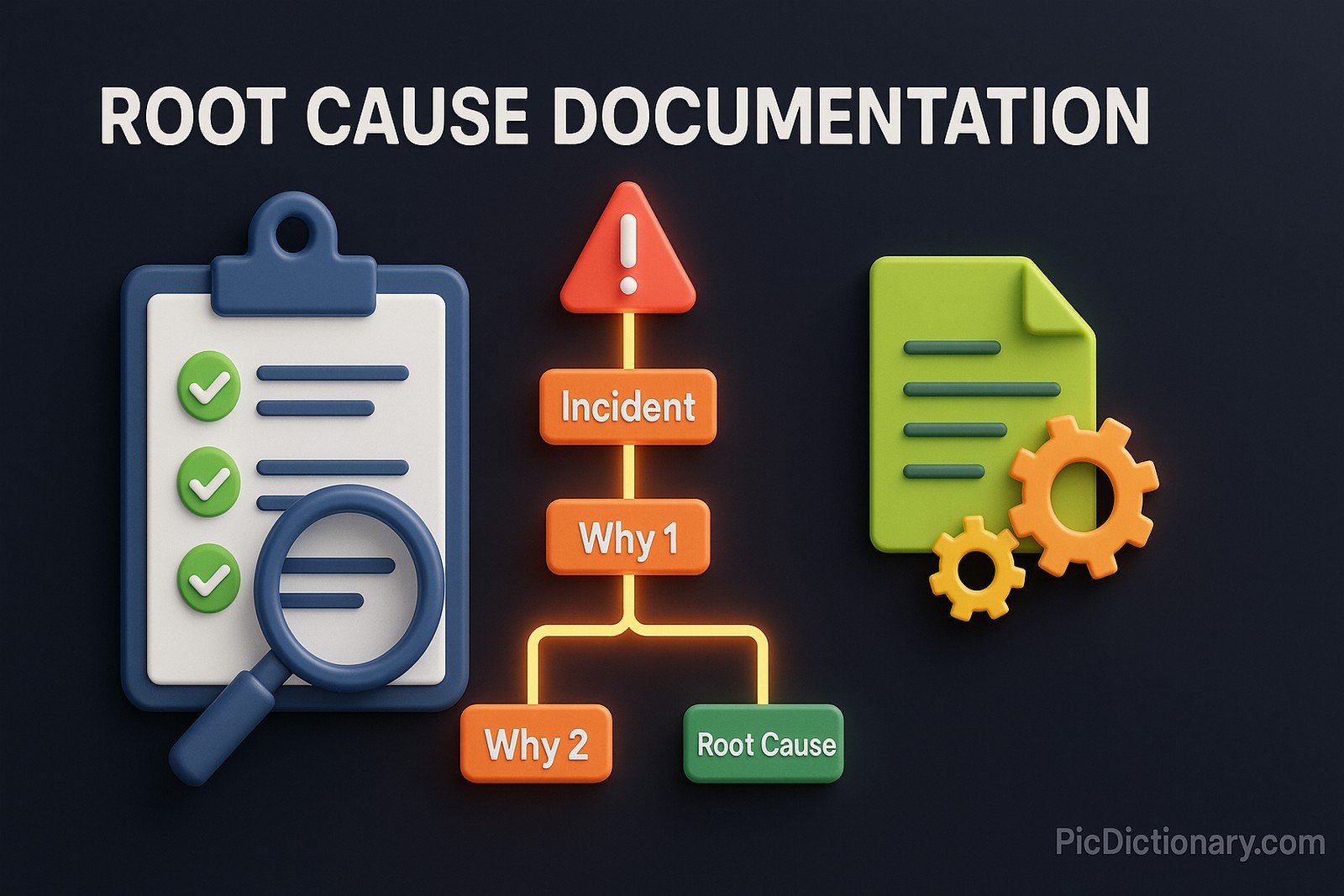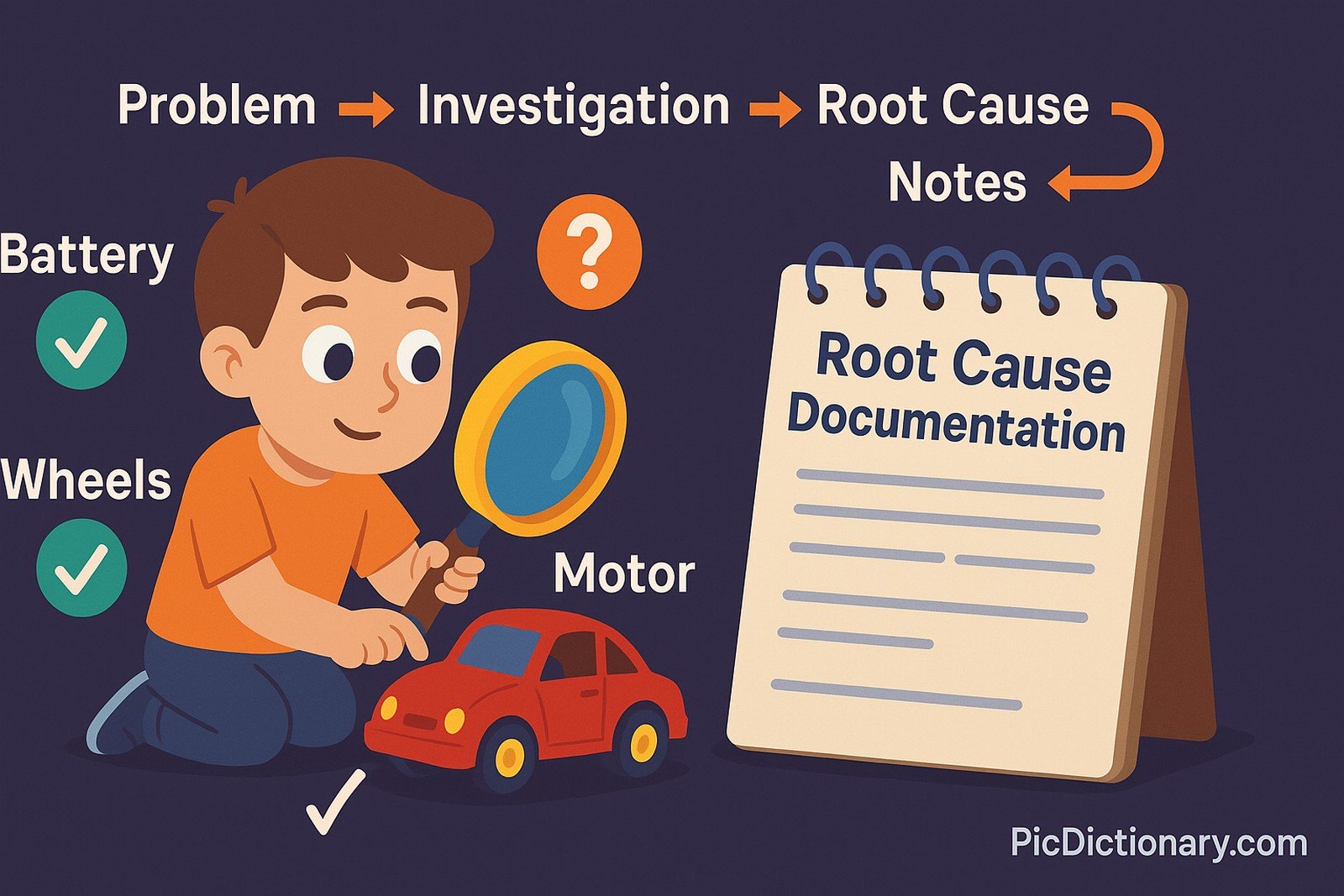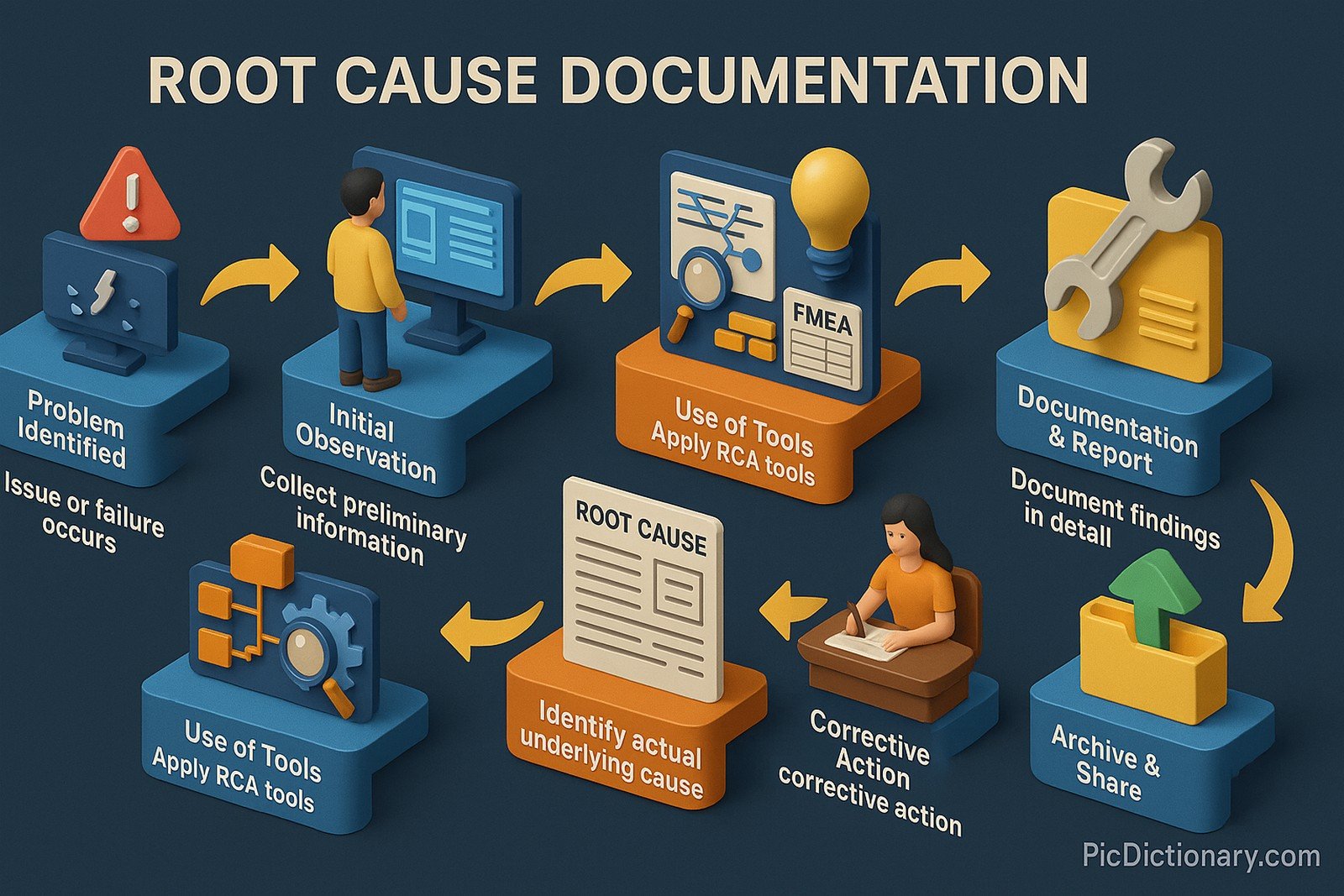Root Cause Documentation

Quick Navigation:
- Root Cause Documentation Definition
- Root Cause Documentation Explained Easy
- Root Cause Documentation Origin
- Root Cause Documentation Etymology
- Root Cause Documentation Usage Trends
- Root Cause Documentation Usage
- Root Cause Documentation Examples in Context
- Root Cause Documentation FAQ
- Root Cause Documentation Related Words
Root Cause Documentation Definition
Root Cause Documentation is the structured recording of the underlying causes of issues, failures, or defects in a system, product, or process. It is used to identify, analyze, and document the factors leading to an undesired outcome, aiding in effective troubleshooting and prevention of future occurrences. Commonly applied in industries like software development, manufacturing, and healthcare, this process helps improve quality control, efficiency, and compliance. Tools such as fishbone diagrams, the 5 Whys, and failure mode and effects analysis (FMEA) are frequently used in root cause documentation.
Root Cause Documentation Explained Easy
Imagine your toy car suddenly stops working. Instead of just fixing the wheels, you check the battery, the motor, and other parts to find out exactly what caused the problem. Root Cause Documentation is like writing down everything you discovered, so the next time the car breaks, you know how to fix it quickly and even prevent it from happening again.
Root Cause Documentation Origin
Root Cause Documentation has its origins in quality management and engineering methodologies, particularly in fields like manufacturing and software development. The rise of structured problem-solving techniques, such as Six Sigma and Total Quality Management (TQM), contributed to its formal adoption in businesses and industries seeking efficiency and reliability.
Root Cause Documentation Etymology
The term “root cause” derives from the idea of tracing problems back to their deepest source, like the roots of a tree. “Documentation” refers to the process of recording findings in a systematic and structured way.
Root Cause Documentation Usage Trends
Root Cause Documentation has seen increased adoption in industries prioritizing continuous improvement and risk management. Sectors like IT, healthcare, and finance integrate it into compliance frameworks to prevent recurring errors. The shift toward automated logging and artificial intelligence-assisted diagnostics has also expanded its use, making documentation more efficient and data-driven.
Root Cause Documentation Usage
- Formal/Technical Tagging:
- Quality Assurance
- Incident Management
- Process Improvement - Typical Collocations:
- "root cause documentation process"
- "effective root cause documentation"
- "root cause investigation"
- "documenting root causes for compliance"
Root Cause Documentation Examples in Context
- A software company documents the root cause of a system crash to prevent future outages.
- In healthcare, doctors use root cause documentation to track medication errors and improve patient safety.
- A manufacturing plant analyzes defective products, documenting root causes to refine production processes.
Root Cause Documentation FAQ
- What is Root Cause Documentation?
Root Cause Documentation is a systematic process of identifying and recording the underlying causes of a problem to prevent recurrence. - Why is Root Cause Documentation important?
It helps organizations improve processes, reduce failures, and enhance efficiency by addressing problems at their source. - What industries use Root Cause Documentation?
It is widely used in IT, healthcare, manufacturing, aviation, and finance for quality and compliance purposes. - How is Root Cause Documentation different from problem-solving?
While problem-solving focuses on fixing an issue, root cause documentation ensures the underlying cause is identified and recorded to prevent recurrence. - What tools are used in Root Cause Documentation?
Common tools include fishbone diagrams, the 5 Whys method, failure mode and effects analysis (FMEA), and Pareto analysis. - How does Root Cause Documentation benefit software development?
It helps developers track and resolve software bugs, improve system reliability, and enhance user experience. - Can Root Cause Documentation be automated?
Yes, modern AI-powered systems and logging tools automate root cause analysis and documentation for faster problem resolution. - Is Root Cause Documentation required for compliance?
Many regulatory bodies mandate root cause documentation to ensure quality control and safety in critical industries. - What are the common challenges in Root Cause Documentation?
Challenges include incomplete data collection, human bias in identifying causes, and lack of standardized documentation procedures. - How can organizations improve Root Cause Documentation?
Standardizing documentation processes, training employees, and using data-driven analysis tools can improve effectiveness.

Root Cause Documentation Related Words
- Categories/Topics:
- Quality Management
- Risk Assessment
- Process Optimization
Did you know?
The airline industry heavily relies on Root Cause Documentation to enhance flight safety. Every aircraft incident undergoes a meticulous root cause analysis, with findings documented and shared globally. This process has led to major safety improvements and a significant reduction in aviation accidents over the past few decades.
PicDictionary.com is an online dictionary in pictures. If you have questions or suggestions, please reach out to us on WhatsApp or Twitter.Authors | Arjun Vishnu | @ArjunAndVishnu

I am Vishnu. I like AI, Linux, Single Board Computers, and Cloud Computing. I create the web & video content, and I also write for popular websites.
My younger brother, Arjun handles image & video editing. Together, we run a YouTube Channel that's focused on reviewing gadgets and explaining technology.



Comments powered by CComment